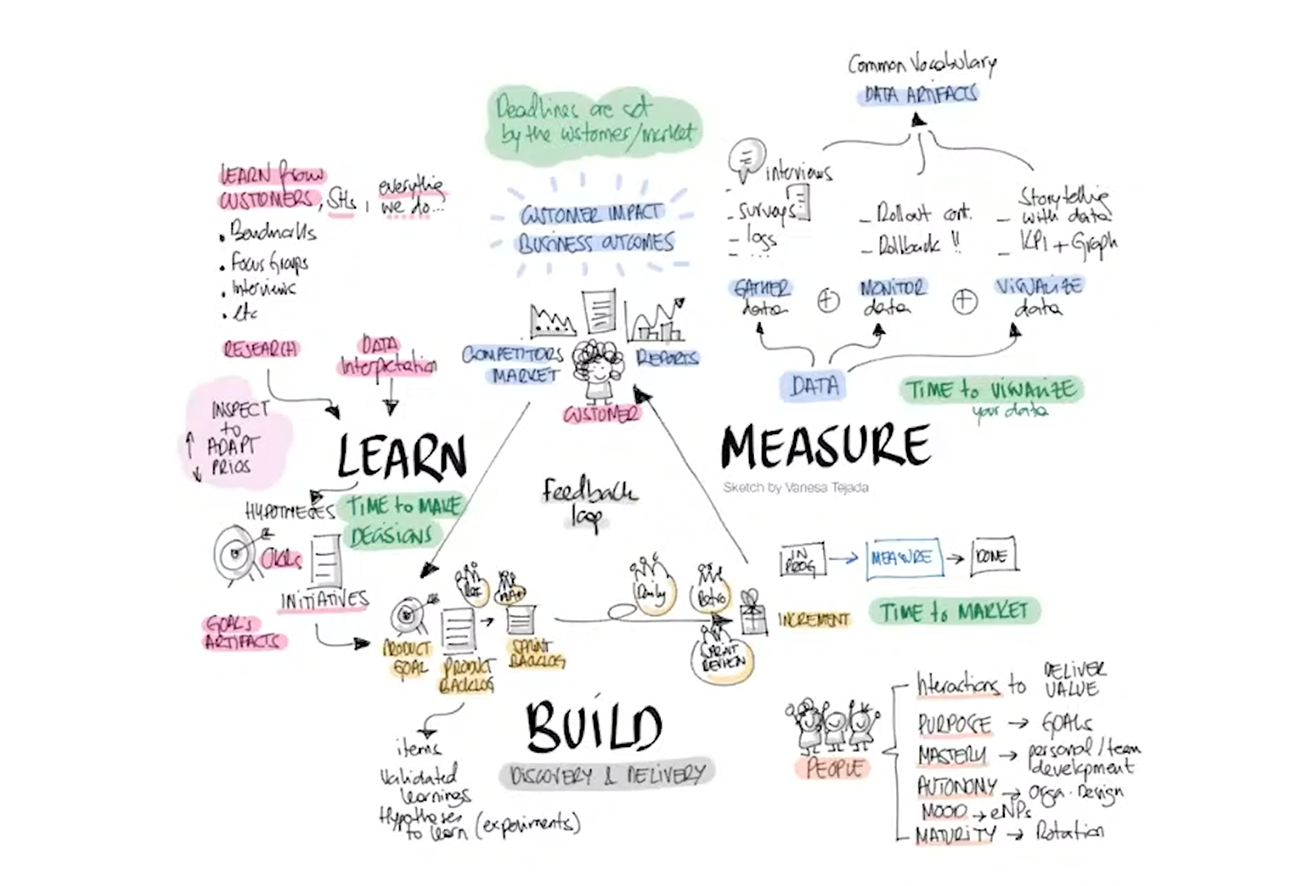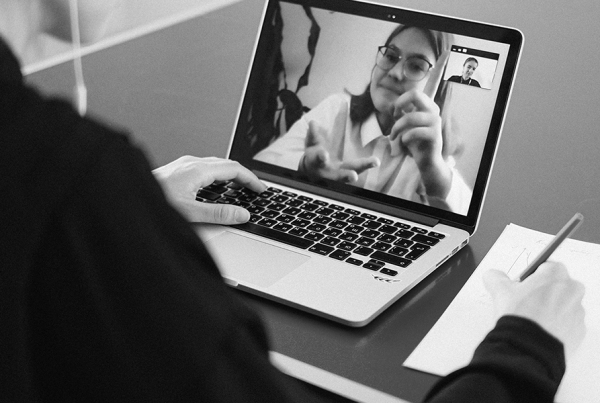Product Strategy = Build + Measure + Learn
At the beginning of March, thanks to the effort and motivation of our Voxel colleagues, we organised the Software Development Summit, a national online event where we shared knowledge and learning from the software development world.
Vanesa Tejada was really happy to participate in the event and show us her vision about how to complement Scrum to complete a good product strategy.
Scrum is an interesting framework to use for the product development process, but is it enough to properly define a product strategy? Vanesa explains how to complement Scrum to obtain a better strategy having in mind the popular Lean Startup loop, “Build, Measure, Learn”.
Building with Scrum
Vanesa emphasizes how the Scrum Guide has changed lately. In the last version the concepts related to product, such as Customer, User, Data, Value, Lean or Stakeholder are more present than ever, so it’s clear that Scrum has a relevant role in product development. However, like the Scrum Guide highlights, it’s a framework to be complemented to increase productivity, value, creativity and results satisfaction.
Vanesa introduces us to the product development process guided by Scrum with the related events and artifacts. She explains how this process is mainly the building part of the product, including discovery and delivery as the main processes inside it.
From this point, she asks us the following question: What happens before and after this building process?
Measuring
Once the product increment is deployed and is available for our final user, it’s vital to measure. Vanesa even tells us to add a measuring phase before the final Done status, that way we won’t forget to measure before starting to build the new prioritised product increment. She highlights that the party just starts when the product increment is in production and visible for our final user.
And, how can we measure? Vanesa recommends us to monitor how the new increment is being used, at the same time she speaks about doing online forms and interviews to obtain feedback. This data will allow us to make better decisions about that increment and properly understand if we should deploy it to other markets and contexts or just go back and remove that product increment.
All this information must be visualised with detail, including KPIs and graphics, since the historic and generated tendencies will allow us to check the impact we make on our user.
Learning
After visualising the information, Vanesa points up how important learning is, since it will help us to know better our clients, our competitors and even our own organisation.
Moreover, Vanesa speaks about the option of having research teams to do benchmarking, focus groups and even interviews to continue learning and completing the profile of our user.
And, why do we need to learn and know more about our users? Because all that information will allow us to make new hypotheses from what we think can have a bigger impact on our user, and what can represent an advantage for our organisation compared to our competitors.
To define and align those hypotheses, Vanesa brings out OKRs methodology. Using this methodology, we can define objectives and key results to measure how far we are from those objectives. Moreover, those hypotheses can be the basis of a backlog of initiatives aligned with the objectives. Those initiatives will feed our future product goals whenever we start to build a new product increment.
These 3 phases, build-measure-learn, define the Lean Startup loop and it will allow us to always have our client in our mind and properly define the product strategy. However, Vanesa highlights that a product strategy is not fixed, it’s being updated all the time and she introduces new topics to have in mind in that sense.
People as a key for our product strategy
Time-To-Market is important related to team velocity and to clients deadlines. Knowing our Time-To-Market can help us to manage and optimize our way of building products and going earlier to the market, so measuring and learning as soon as possible.
Regarding measuring, the time we need to visualize our data is crucial, since it’s directly related to how fast we can make decisions.
Finally, Vanesa insists about how important people are, since people are who allow giving value to our clients. In this sense, we must take care of them, through defining a purpose that motivates them, giving them the time and the context to properly develop themselves, and facilitating a team structure that allows them to deliver value autonomously. Vanesa also considers really important people’s mood and team maturity, because these variables give stability and sustainability to our teams.
To close, Vanesa speaks about the 3 feedback loops that are interconnected inside the Build-Measure-Learn triangle. They are related to our client, our product and our people, all of them are dependent from each other and without one of them the others can not exist.
Personally, I think this talk it’s a great way to put in one scheme all the dependencies we must have in mind to properly define a good product strategy. I would highlight the last part where she speaks about people as one of the keys for a proper product strategy, as she says, we are people delivering value to people.
Watch the talk again:
About the author:











